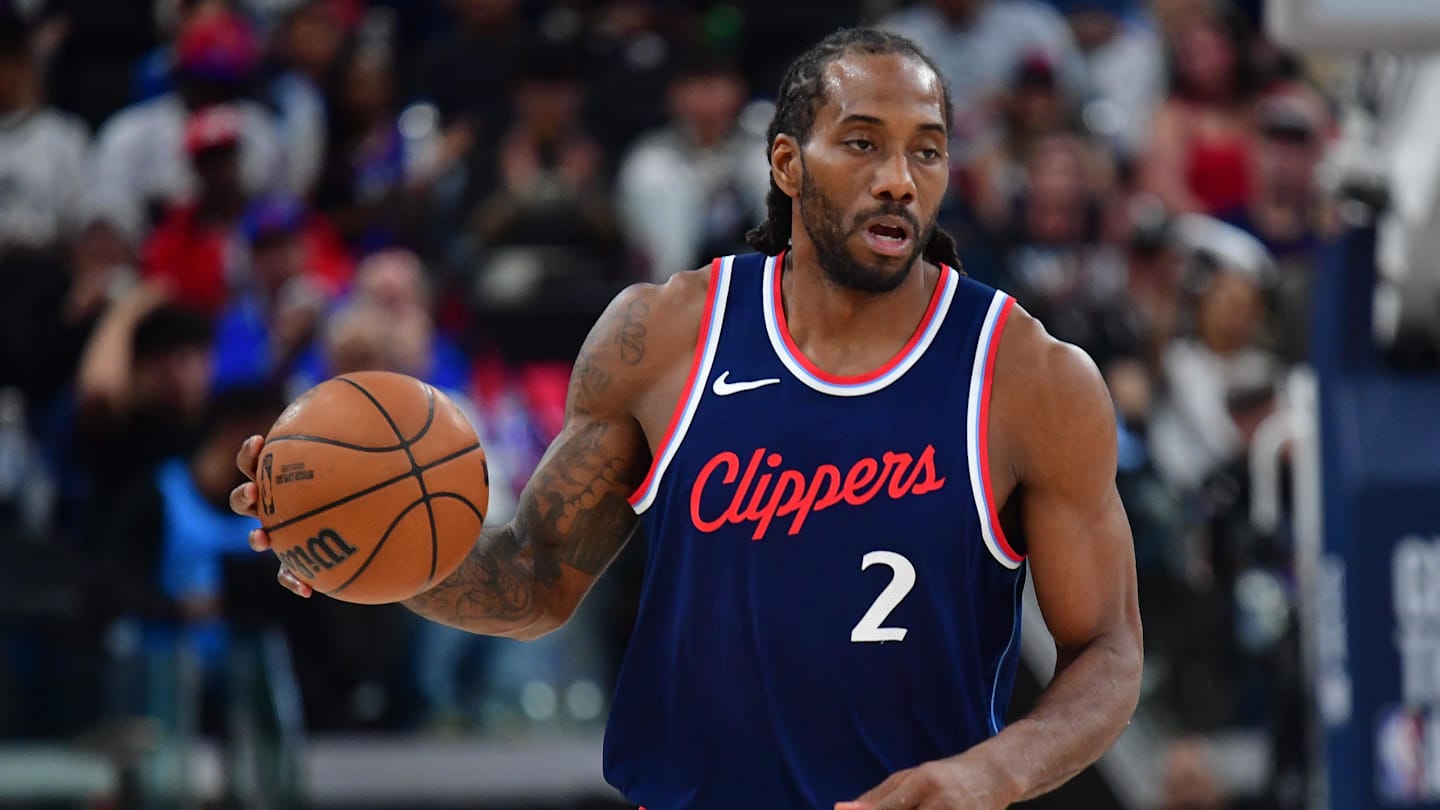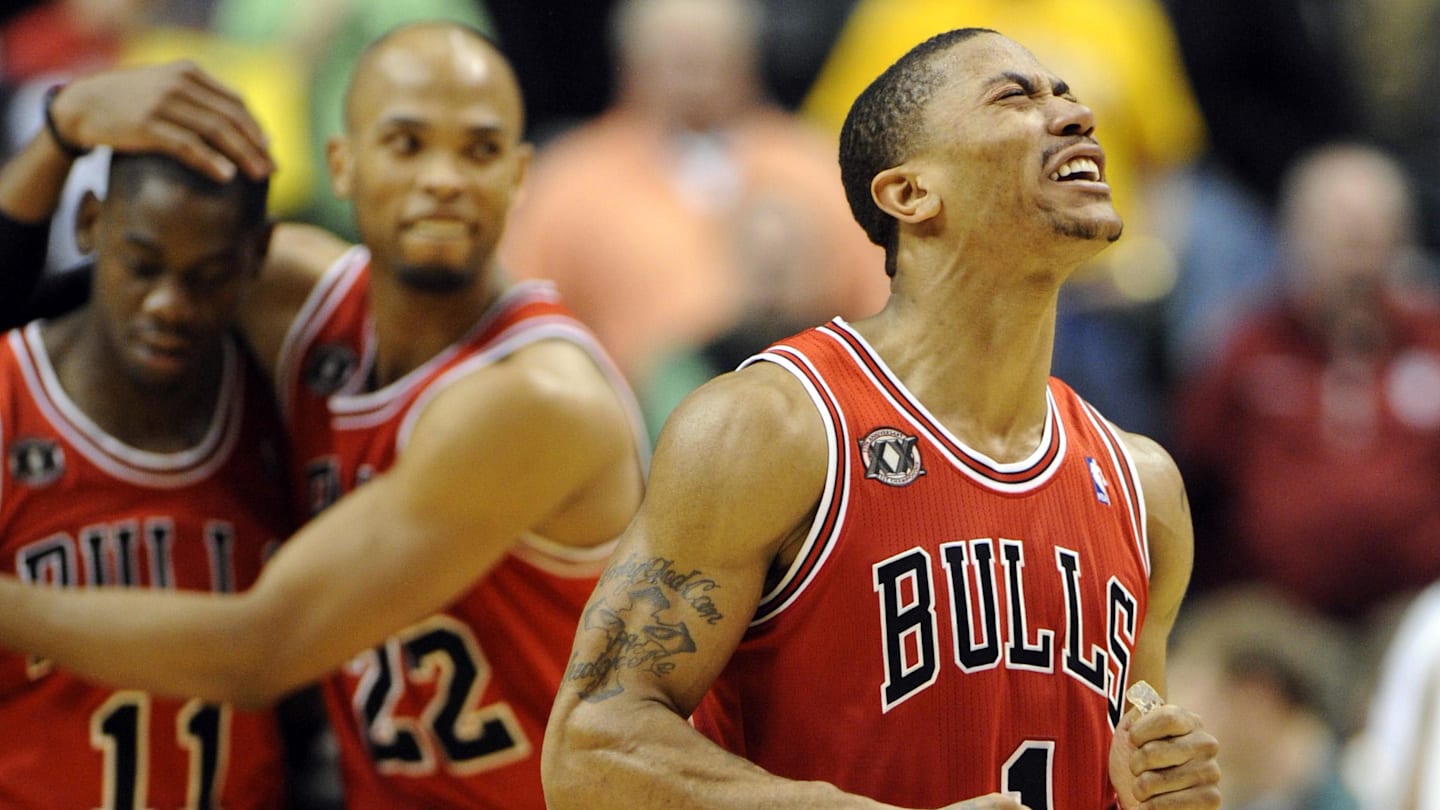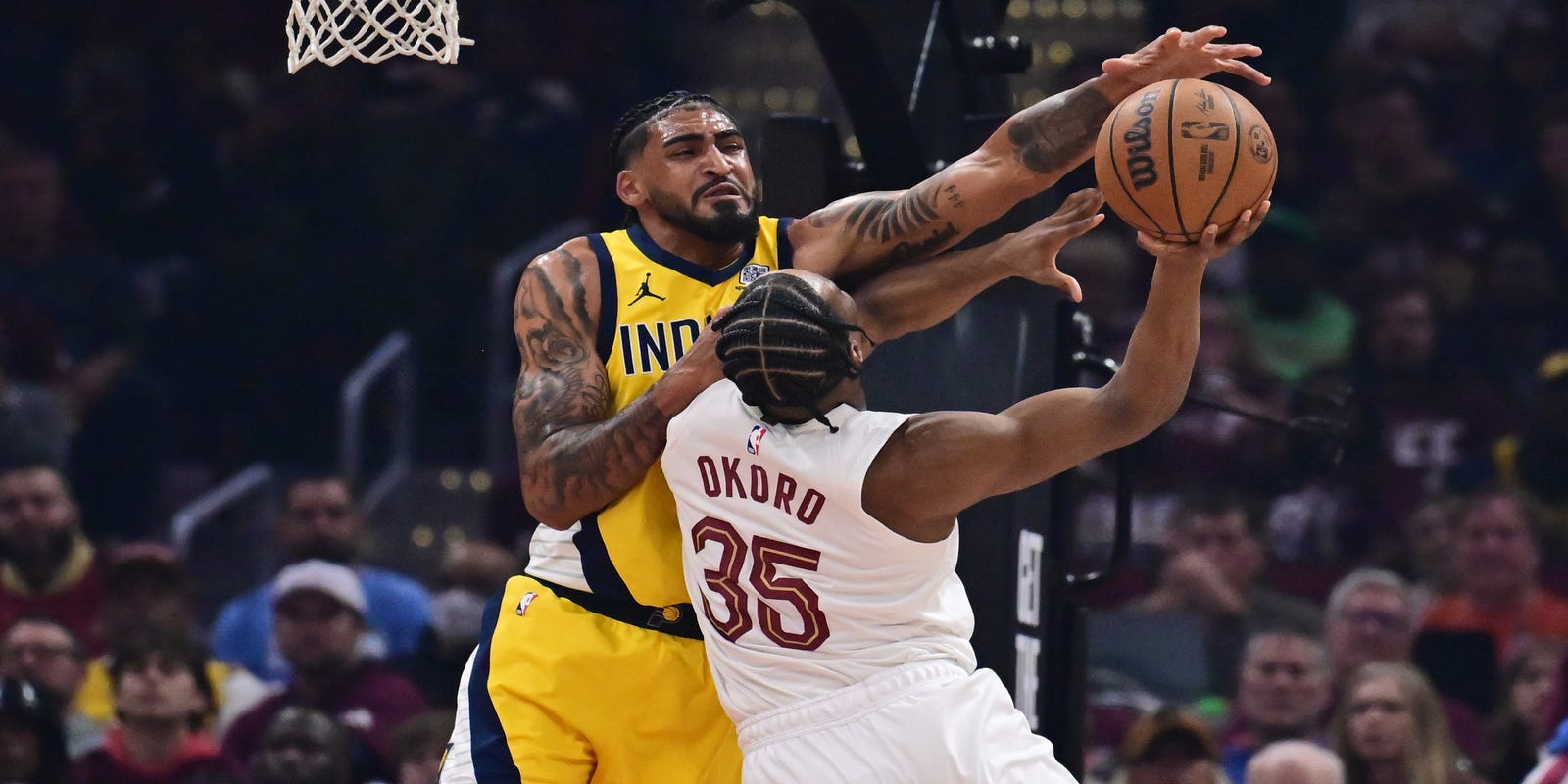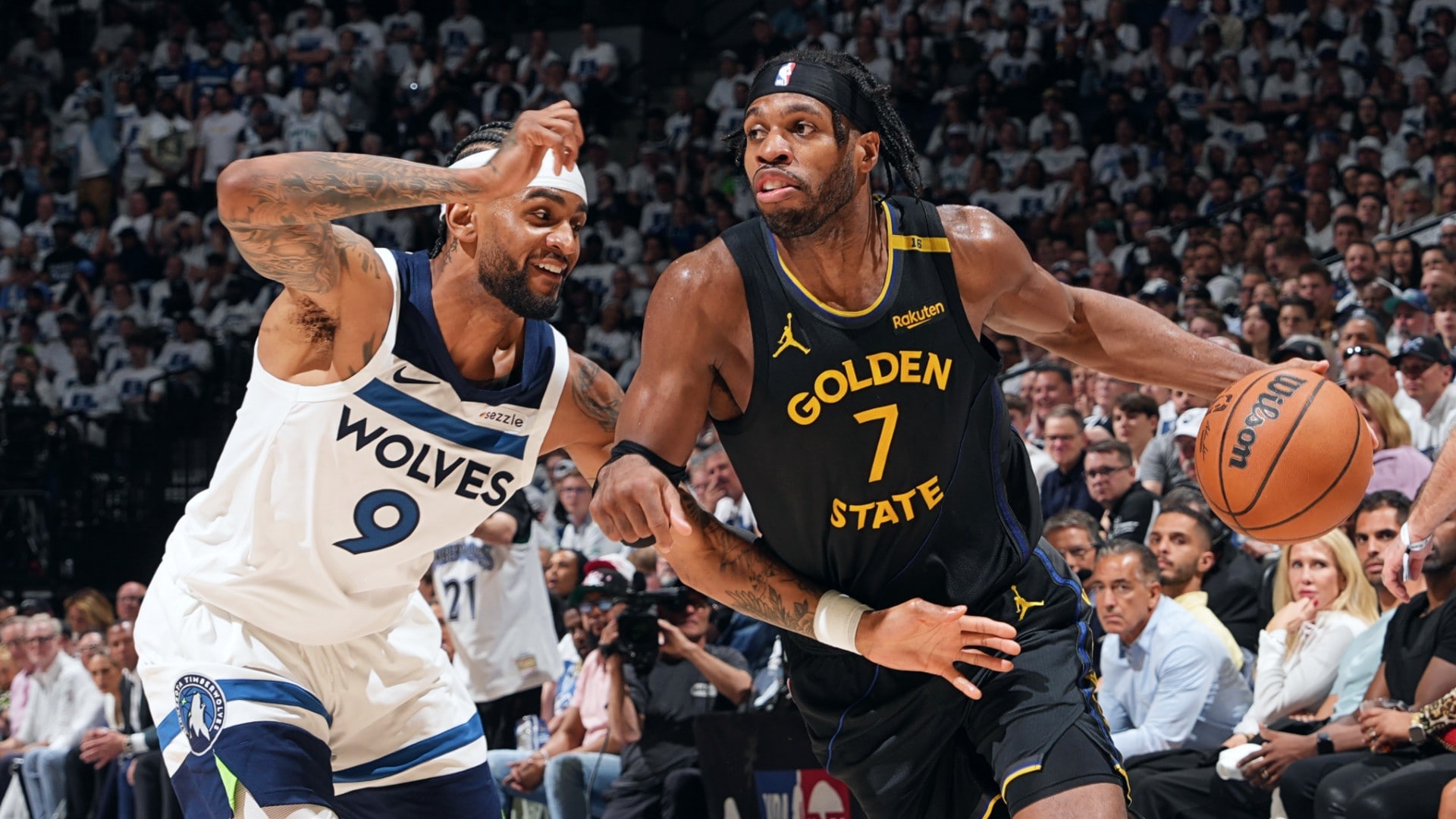
The NBA playoffs are a harsh environment.
Exposure can lead to some surprising revelations about teams, players and coaches. These revelations are not always negative. Pressure makes diamonds, as the saying goes, and getting forced into unfamiliar situations with a team’s season on the line can create some remarkable outcomes. In recent history, Jalen Brunson feels like an excellent example of what a playoff run can reveal about a player, when he was forced into action as the Dallas Mavericks’ No. 1 option when Luka Doncic went down and shined so brightly he became the top target of free agency that offseason. A few years later, he’s a perennial MVP candidate and leader of the New York Knicks.
But, of course, that’s at the positive end of the spectrum. On the negative end, a bad playoff run can spell doom for an entire organization, not just a single player. It was not so long ago that the Utah Jazz were annually competing for the top seed in the West; after a bad postseason showing in 2022, however, the roster was stripped to the studs and has yet to recover.
The overarching theme here is the postseason teaches teams lessons, undeniable truths about their rosters and ideologies as currently constructed. Whether they adhere to those lessons is a different matter. But the playoffs expose uncomfortable truths and unexpected bright spots alike.
For the teams that have already been eliminated from this year’s postseason, the time to examine those lessons is right now. Here’s something every eliminated team learned from their trip to the playoffs this season.
Lesson learned: Size is still important
Putting all the hype aside, an unceremonious first-round exit was always likely how it would end for the Lakers. The Doncic trade was a no-brainer in the long-term future but completely upended the balance of the roster in the immediate. It gave the team a high ceiling based off Doncic’s tendency to explode for winning performances but a very low floor because there were clear and obvious weaknesses on the court. The biggest weakness? A complete and utter lack of size across the roster.
Once Anthony Davis was shipped out and the Mark Williams trade fell through, the Lakers suddenly lacked any 7-footers who could contribute at even replacement level. Jaxson Hayes and Alex Len were the only two big men left on the team, and both were so disastrous that coach JJ Redick refused to play them at all in the team’s first-round playoff loss to the Minnesota Timberwolves. Consequently, the Lakers were outrebounded by 25 in the final two games of the series and allowed Rudy Gobert to eliminate them almost single-handedly with a devastating 27-point, 24-rebound performance in Game 5. The Lakers actually did an alright job defending the Timberwolves when they got into the paint, but their lack of size allowed for a fatal number of second-chance opportunities. They still rank last in the playoff field with 18.8 opposing second-chance points allowed per game and Minnesota averaged a whopping 27.8 shot attempts in the restricted area per game, which currently leads all postseason teams.
It’s not new knowledge that NBA teams must have size to compete for championships. But the Lakers had many convinced they had enough to contend between the overwhelming skill of the Doncic–LeBron James tandem and improved perimeter defense led by Dorian Finney-Smith post-trade deadline. This early playoff exit serves as a harsh reminder that, no matter how loaded a team might be talent-wise, they must have size on the roster to win games in physical playoff settings.
Lesson learned: Kawhi Leonard’s flashes are still just flashes
Leonard’s 39-point explosion in Game 2 of the Clippers’ battle against the Denver Nuggets was fun to watch and an ominous reminder of how good Leonard is when he’s healthy and feeling it. It also led to many declarations from Clippers and NBA fans alike that Leonard was back in full form to terrorize his opponents on both ends of the court.
The Clippers were eliminated in seven games because it turns out that was not true. For all his excellence in that contest, he was merely good rather than great in the rest of the series. In the six other games against Denver, Leonard averaged 22.6 points per game on 49% shooting from the floor. Most notably he was as absent as any other Clipper in Game 7’s embarrassment, shooting 6 of 13 for 22 points with five rebounds, two assists and two blocks. The dominant basketball cyborg who led the Toronto Raptors to a championship was nowhere to be found.
That should force Los Angeles to acknowledge that, at this point in time, Leonard’s flashes are just that—flashes. A remembrance of what was, not an indicator of what’s to come. Which could certainly change with a fully healthy offseason, something Leonard hasn’t enjoyed in several years. But the Clippers have to work with what they have, and what they currently have in Leonard is not a No. 1 option on a championship team but instead a good two-way forward past his prime with a deeply concerning injury history.
It’s not the lesson the franchise wants to learn from this disappointing playoff series. But it’s the one it must. Yes, many Clippers are to blame for the Game 7 loss, such as James Harden, but if the old Kawhi Leonard was really back, there’s no way they get blown out of the water to the degree they did. This L.A. franchise can’t approach this offseason with the mentality that Leonard can carry the team to victory after what happened in the first round this year.
Lesson learned: The young core can handle postseason basketball
The Pistons were a wonderful story this season as they tripled their win total from last year’s complete Monty Williams–led disaster and earned the No. 6 seed in the East. Expectations were fairly low after that; Detroit was playing with house money and drew a New York Knicks team designed with playoff basketball in mind for the first round. It would not have been a surprise, or even all that concerning, if the youthful Pistons struggled to find their bearings against playoff-hardened opponents and were summarily sent home as soon as possible.
But that didn’t happen. Instead, Detroit’s core proved it was very much capable of handling the rigors and stress points of postseason basketball. Cade Cunningham did not shoot the ball particularly well from deep but hit 49.5% of his two-point tries and never once backed down from the moment. Ausar Thompson learned how frustrating it was to defend a crafty guard like Brunson but adjusted and made a big impact anyway. Jalen Duren showed enough two-way juice that his long-term stock enjoyed a pretty big bump.
There’s still a long way to go before the Pistons are contenders and nobody should view this six-game series as proof this group of players is all the franchise needs to see another banner raised to the rafters. But not everybody even survives, much less thrives, in their first exposure to playoff basketball. The young Pistons, for the most part, rose to the moment. That’s something Detroit can build upon.
Lesson learned: Giannis Antetokounmpo can’t do it alone
The Bucks’ future is completely up in the air after they were eliminated by the Indiana Pacers following Damian Lillard going down with a torn Achilles in Game 4. It is tough to take much away from a series that largely didn’t feature the team’s second-best player who was lost to such a devastating injury in the middle of it. But if there were any one lesson Milwaukee should take away, it’s that Antetokounmpo can’t win games by himself with the roster as it is currently constructed.
The Greek superstar was nearly immaculate in his first healthy postseason in years. He averaged 33.0 points, 15.4 rebounds and 6.6 assists per game while shooting 60.6% from the floor. The Pacers had no answer when he got downhill and Antetokounmpo really showed out defensively, too. It wasn’t enough to take more than one game from Indiana, and he was unable to prevent the shocking collapse at the end of Game 5 that spelled the end of the Bucks’ season. But Antetokounmpo is clearly still capable of producing like a No. 1 option on a championship roster.
The issue is that the roster he currently plays with is not up to task. Especially without Lillard. The Bucks’ sole win in the series came with the star point guard playing nearly 40 minutes. He shot poorly, but the resources the defense was forced to designate toward him opened up the court just enough for the rest of the Bucks to produce at a winning clip. When it was only Antetokounmpo out there, though, Milwaukee wasn’t good enough.
Big decisions have to be made by the organization this summer. The series loss to the Pacers should, if anything, serve as a data point that Antetokounmpo can’t do it alone. Not with these teammates. Whatever changes are coming must be made with that in mind. Running it back is not good enough.
Lesson learned: Questions persist about Ja Morant’s ability to hold up
It’s tough to pull any on-court takeaways from the Grizzlies’ demolition at the hands of the 68-win Oklahoma City Thunder. Memphis was missing multiple rotation players due to injury, replaced Taylor Jenkins with rookie head coach Tuomas Iisalo a month prior to the postseason, and drew an utterly dominant Thunder team in the first round. One must be careful in drawing definitive conclusions from an overmatched, shorthanded roster dealing with recent organizational turmoil.
However, if there was something to be concerned about after Memphis was manhandled by OKC in the first two games and wound up getting swept, it’s Morant’s ability to hold up in postseason play.
Morant missed most of the last two games of the playoff series because he suffered a hip contusion on a hard fall in Game 3. Paired with the knee injury that forced him to miss three games in the 2022 series loss to the Golden State Warriors means, in three trips to the postseason, Morant has twice been sidelined as his team gets eliminated. One could fairly chalk that up to bad luck, but with Morant’s injury history, it’s more of a worrying trend.
The All-Star point guard missed 32 games this past season for various bumps and bruises. He played all of nine games in the 2022–23 campaign, missing the first 30 games due to suspension before suffering a season-ending shoulder injury. Morant set a career high in games played as a rookie with 67. You get the picture. Whether it’s due to play style, his build and conditioning, or plain ol’ bad luck, Morant has problems staying on the court to help his team—problems that are exacerbated in the postseason, where play is most physical.
Morant said he had “figured the Thunder out” and the Grizzlies would’ve gone back to Memphis for Game 5 if he didn’t get hurt. That’s all well and good, but he did get hurt. Again. And with this Grizzlies core appearing to stagnate, the front office has to decide whether or not injury problems in the playoffs are an inextricable aspect of the Morant experience.
Lesson learned: The next step is finding an offensive creator
The young Rockets, with a rotation largely consisting of playoff rookies entering this spring, proved very much up to the task defensively in their seven-game series loss to the Warriors. Spearheaded by Amen Thompson, coach Ime Udoka put together a brutal and physical defensive game plan that successfully stifled Stephen Curry after the former MVP won Game 1 by himself. Through that lens the first foray into the postseason with this Houston core was a tremendous success; defense does win championships, after all.
But the Rockets are sitting at home instead of playing the Timberwolves because they were woefully inadequate on the other end of the court. They just could not get anything going on offense, and not only because Draymond Green and Jimmy Butler led an admirable defensive effort. For as prickly as Houston’s defense was, the offense was entirely toothless. Fred VanVleet and Dillon Brooks provided the occasional shot in the arm with veteran playmaking and shooting, but the Rockets’ young core proved they had a long way to go on that end of the court. For the series, Thompson shot 49% from the floor on merely 12 attempts per game. Alperen Sengun, a first-time All-Star this season, shot 45% and went 9 of 23 in Game 7. Then, of course, there’s Jalen Green, who went nuclear in Game 2 with 38 points and averaged 9.2 per game otherwise.
It is too simplistic to say the Rockets need shooting. Of course they do. But what they need more than anything else is a legitimate creator, someone to run the offense through for the whole game and who can get their own bucket when everything falls apart. VanVleet did a fair imitation of that player in Game 6 against the Warriors, but his best days are undeniably behind him. The team needs an injection of offensive firepower in the worst way.
This season was a great one for the Rockets, but they do not want to remain stagnant. With a little more scoring punch they could very well still be playing. This offseason will be a big one in Houston, and a creator should be at the very top of GM Rafael Stone’s priority list.
Lesson learned: They need more of everything
The Heat have always been a thorn in playoff opponents’ sides when Erik Spoelstra is on the sideline. His ability to earn complete and total buy-in from his players, coupled with the NBA’s best strategic acumen, has made Miami an incredibly difficult out for many years regardless of whether stars like Butler were on the roster. The basketball world figured the Cleveland Cavaliers would handle the overmatched Heat in the first round this year, but Miami wouldn’t make it easy.
Turns out this was not true. At all. The Cavs manhandled the Heat in Cleveland to kick off the series and then absolutely annihilated them when the games shifted to Miami. Spoelstra’s squad lost Games 3 and 4 by a combined 92 points, with the sweep completed by way of a truly shameful 55-point defeat.
It was a tumultuous year in Miami with the Butler sideshow taking up a ton of attention. When he was finally shipped off, the Heat were unable to get a strong return and instead were left with rotation players from a Warriors squad that was bound for the play-in tournament. Even still, there was enough respect for Spoelstra’s coaching and Heat Culture that expectations of competitiveness remained.
But with the Cavs crushing them into fine dust particles, it’s obvious that this Heat team doesn’t just need another star or to dig up more G League gems. It needs more of everything. Because everything has to be bad to lose by 55 points in a playoff game.
Lesson learned: More shooting is a must
Against most expectations, the Magic gave the defending champion Boston Celtics a pretty tough time in the first round of the playoffs. Their efforts were spearheaded by Paolo Banchero and Franz Wagner, who showed off every bit of their two-way talents; Banchero in particular proved to the world that he was ready to take the leap from good to great. Orlando was missing a few key rotation players, yet still played competitive basketball that kept the score close most of the series against a vastly more talented opponent.
However, it also exposed just how brutal the Magic are shooting the ball, an issue that must be addressed heading into this offseason. They shot 26.3% from three against Boston. They averaged 8.2 makes from beyond the arc per game. Kentavious Caldwell-Pope was allegedly the Magic’s best shooter and acquired last offseason to offset this very issue; he went 6 of 23 from beyond the arc in five games against the Celtics.
After the Magic ranked last in the NBA in three-point percentage during the regular season, this should hardly come as a surprise. But it definitely showed how important shooting can be for a young team with two stars that aren’t great from three themselves. Giving Banchero and Wagner room to work is the priority in Orlando entering the offseason and finding more shooting is the quickest way to ensure that happens.


